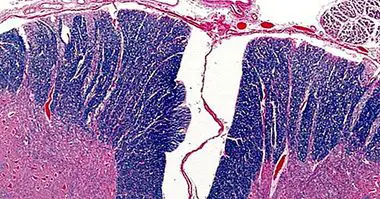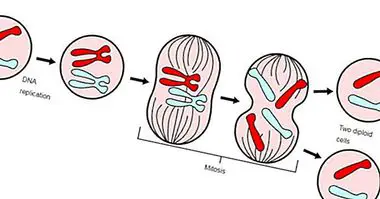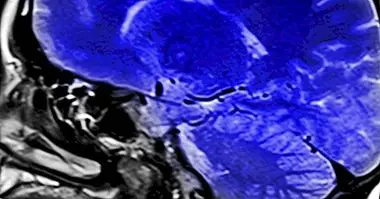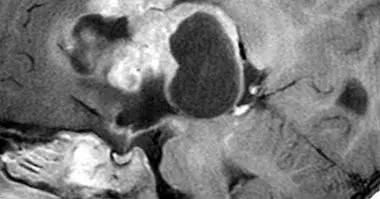Werner syndrome: symptoms, causes and treatment
Aging is a natural phenomenon, product of the wear caused by the accumulation of damage and mutations of the cells of our body throughout our lives. Although a large part of the population would prefer not to age, given that it favors the appearance of diseases and different problems, the truth is that it is something that sooner or later we all do.
But for some people, this aging can happen in an exaggeratedly premature way due to the presence of genetic alterations, to the point of considerably reducing their life expectancy. This is what happens with Werner syndrome , about which we are going to talk about in this article.
- Related article: "The differences between syndrome, disorder and disease"
Werner syndrome: adult progeria
We call Werner syndrome a disorder or disease of genetic origin which is characterized by causing those who suffer from it premature and extremely accelerated aging , which begins to occur in the adult stage (from the twenty or thirty, although there is a majority tendency that begins to be observed at the end of the third decade of life or at the beginning of the fourth). It is a rare disease and very low prevalence, being a type of progeria (similar to the best seen in children, the Hutchinson-Gilford syndrome).
The symptoms can be very heterogeneous, but they are all related to cell aging: Hair loss and graying, wrinkles, ulcerations and changes in the skin, cataracts and retinal problems are some of the most frequent cardinal symptoms. In addition, sclerosis and arteriosclerosis, hypotonia and loss of muscle mass, weight loss and metabolic problems, slowing down and loss of reflexes and hypogonadism (also associated with loss of fertility) are usually added.
They are also very frequent and more serious other problems of the much more advanced ages of life : osteoporosis, greater likelihood of the appearance of cysts and cancerous tumors (especially sarcomas and melanomas), heart problems, type 2 diabetes, endocrine alterations, decreased libido and neurological alterations.
Unfortunately the aging generated by this disorder usually leads to a significant decrease in life expectancy , being the average of survival inferior to the fifty years of age. Some of the most common causes of death are cardiovascular problems or the appearance of sarcomas or other types of cancer.
- Maybe you're interested: "The 3 phases of old age, and its physical and psychological changes"
Possible prodrome
Werner syndrome is a disorder that as a general rule, it does not begin to express itself until adulthood .
However, it is possible to observe how in many cases it is not uncommon for problems of development to exist in adolescence. Specifically, it is common that there is a slowdown in development, juvenile cataracts and low weight and height in relation to what is expected by age.
Causes of this syndrome
Werner syndrome is a genetic disorder of an autosomal recessive nature. This implies that the origin of this disease is found in genetics , being also congenital and hereditary.
Specifically, in a very high percentage of cases there are different mutations of one of the genes of chromosome 8, the WRN gene . This gene is linked, among other things, to the formation of helicases, enzymes linked in the duplication and repair of DNA. Its malfunction generates problems in the repair of DNA, so that they begin to accumulate alterations and mutations that end up causing aging.
Also, also the telomeres are affected , shortening much earlier than usual and accelerating cellular aging.
However, a small percentage of cases have been observed in which there are no mutations in this gene, not knowing exactly why it arose.
Treatment
Werner syndrome is a very rare condition, having received relatively little attention so far from the scientific community. Being also a disorder of genetic type, there is currently no treatment to cure this condition. But nevertheless, there are researches that seek to find methods to stop accelerated aging and that they seem promising when it comes to improving protein expression and the functionality of the WRN gene, although they are still under investigation and not in the trial phase.
Currently, the only treatment that is applied is basically symptomatological.
For example, problems such as cataracts they have the possibility of being corrected by surgery . Surgery may also be necessary in the presence of tumors (which may also require chemotherapy or radiotherapy) or in some cardiac problems (for example, the need for a pacemaker). People suffering from this condition should also undergo periodic check-ups in order to control and treat heart problems, blood pressure and cholesterol levels and blood sugars, among others.
It is essential to lead an active and healthy lifestyle, with a low-fat diet and regular exercise. Alcohol, tobacco and other drugs can be very harmful, and should be avoided. Also physiotherapy and cognitive stimulation they are useful to preserve the functionality of these subjects.
Also the psychological factor is also very important. In the first place, psychoeducation will be necessary in order that the subject and his / her environment can understand the situation and the possible problems that may arise, as well as guide and develop together different action guidelines to face the difficulties.
Another aspect to treat especially is stress, anxiety and anguish that can probably accompany the diagnosis or the suffering of the disease, may be necessary to apply different types of therapy such as stress management, anger or emotions or cognitive restructuring.
Working with the patient that is supposed to age and try to generate more positive interpretations can be useful. Also, through therapies such as the systemic family can be work the implication and sensations of each one of the components of the environment with respect to his experience of the situation.
Finally, and given that it is a genetic disorder, the use of genetic counseling is recommended in order to detect the alterations that generate the disorder and check. Although the descendants of these people are carriers of the mutations that cause the disease, it is not usual for the disorder to develop unless both parents have it (it is an autosomal recessive disorder).
Bibliographic references:
- Acevedo, A., J Fernandez, J. & Salas, E. (2006). Adult Progeria (Werner's syndrome). Follow-up of 2 cases from Primary Care. Semergen, 32: 410-4. Elsevier
- Agrelo, R., Arocena, M., Setien, F., Aldunate, F., Esteller, M., Da Costa, V & Achenbach, R. (2015). A novel Werner Syndrome mutation: pharmacological treatment by read-through of nonsense mutations and epigenetic therapies. Epigenetics, 10 (4): 329-341.
- Barrios, A. and Muñoz, C. (2010). Atypical Werner syndrome: atypical progeroid syndrome. Annals of Pediatrics, 73 (2): 67-112.



















